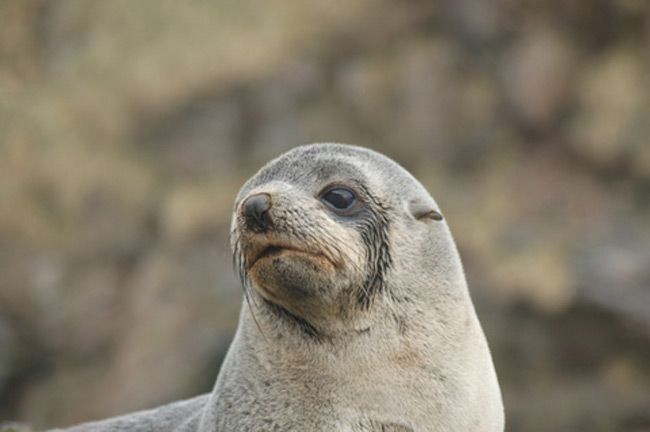Female Seals Cruise to Choose Best Mate

In their own version of Match.com, female fur seals have particular preferences when it comes to partners. And they're willing to trek long distances to find that perfect mate.
A team of scientists studied a colony of Antarctic fur seals (Arctocephalus gazella) on the sub-Antarctic island of South Georgia.
"What we found is that the females are moving up to 35 meters [to find a mate], which might not sound like a long distance but in fact that's the size of our study colony. So in a bigger colony they might be moving even farther," said Joseph Hoffman, a zoologist at the University of Cambridge who headed up the study. (One meter is about a yard.)
Up to now, scientists had assumed that Antarctic fur seals hooked up via a breeding system in which in-charge males fought and advertised to gain mating rights to passive females.
Flashy mates
The new finding helps animal-behavior scientists resolve the so-called lek paradox. In many species, females gather in "leks," where the males hoot-and-holler or display their ornate coats to woo a female in wait.
In this mating system, it's the "sexiest" male with the most to offer that gets the girl, or girls, typically.
Sign up for the Live Science daily newsletter now
Get the world’s most fascinating discoveries delivered straight to your inbox.
Since the male just provides sperm and no parental care of offspring, the female is thought to base her decision indirectly on the male's genes. Past studies have linked certain visual attributes with genetic fitness, which gets passed on to offspring. For instance, female stalk-eyed flies prefer males with long eye spans. And the preference has payoffs, as these ogling males ensure moms will have more male offspring and the potential for more "grandchildren."
However, if all females were to flock to the most eye-catching male, genetic diversity would plummet over time, which is not in the case of fur seals and many other species that mate via leks. ?
Seal of approval
The Antarctic fur seals, it turns out, avoid the loss of genetic diversity with careful mate selection that requires a short trek across the colony.
The scientists attached cattle tags to about 700 random females [image], and they identified distinctive natural markings on males, as the male seals are too aggressive for the tag method. Every day over a 10-year period from 1994 through 2004, the scientists observed the location of males and new pups [image]. They took skin clippings from the fore-flippers of females and pups for genetic analyses.
Results showed that less than 25 percent of the females mated with nearby males. Many traveled 30 feet or more from neighboring males [image], and some even trekked across the entire colony.
"There was one female I was watching and she was sitting in her male's territory for the whole season, and then on the day that she came into estrous I saw her on the other end of the study beach. And then the next day she was back in his territory again," Hoffman told LiveScience.
A genetic comparison between the female's nearby mate and her final choice showed that the farther a female moves the more genetically diverse is the mate.
Seal secrets
In both mice and humans, some studies have revealed mates can detect distinct odors associated with so-called major histocompatibility (mhc) genes, which are linked to functions of the immune system.
Hoffman said he's not sure how the female seals weed out less compatible mates for those with the perfect mix of genes. The seals could use visual cues such as body size, a phenomenon found in other species, to assess a male's genes.
Or they might be able to sniff out genetically dissimilar mates, Hoffman and his colleagues state in a report on the study published in the Feb. 8 issue of the journal Nature.
- Animal Sex: No Stinking Rules
- Top Ten Unexplained Phenomena
- Images: Under the Sea: Life in Sanctuaries
- The Rules of Attraction in the Game of Love
- Top 10 Amazing Things You Didn't Know About Animals
Jeanna Bryner is managing editor of Scientific American. Previously she was editor in chief of Live Science and, prior to that, an editor at Scholastic's Science World magazine. Bryner has an English degree from Salisbury University, a master's degree in biogeochemistry and environmental sciences from the University of Maryland and a graduate science journalism degree from New York University. She has worked as a biologist in Florida, where she monitored wetlands and did field surveys for endangered species, including the gorgeous Florida Scrub Jay. She also received an ocean sciences journalism fellowship from the Woods Hole Oceanographic Institution. She is a firm believer that science is for everyone and that just about everything can be viewed through the lens of science.











